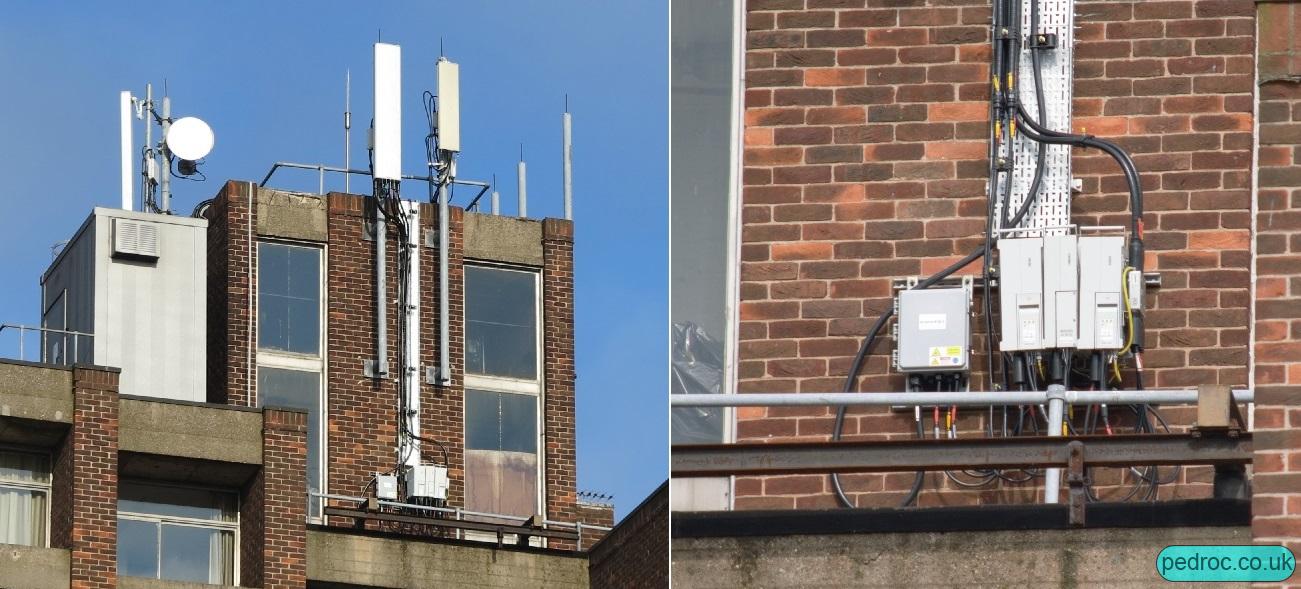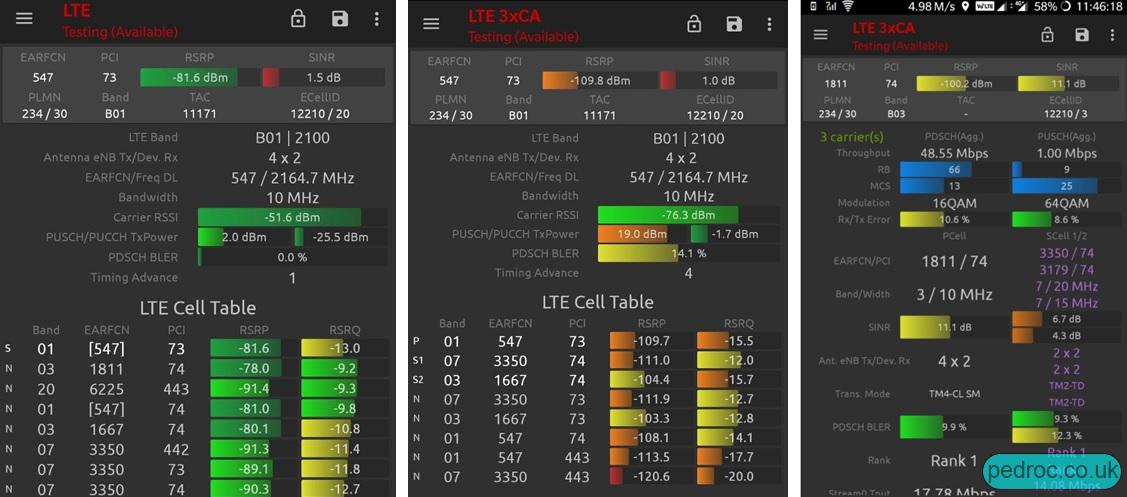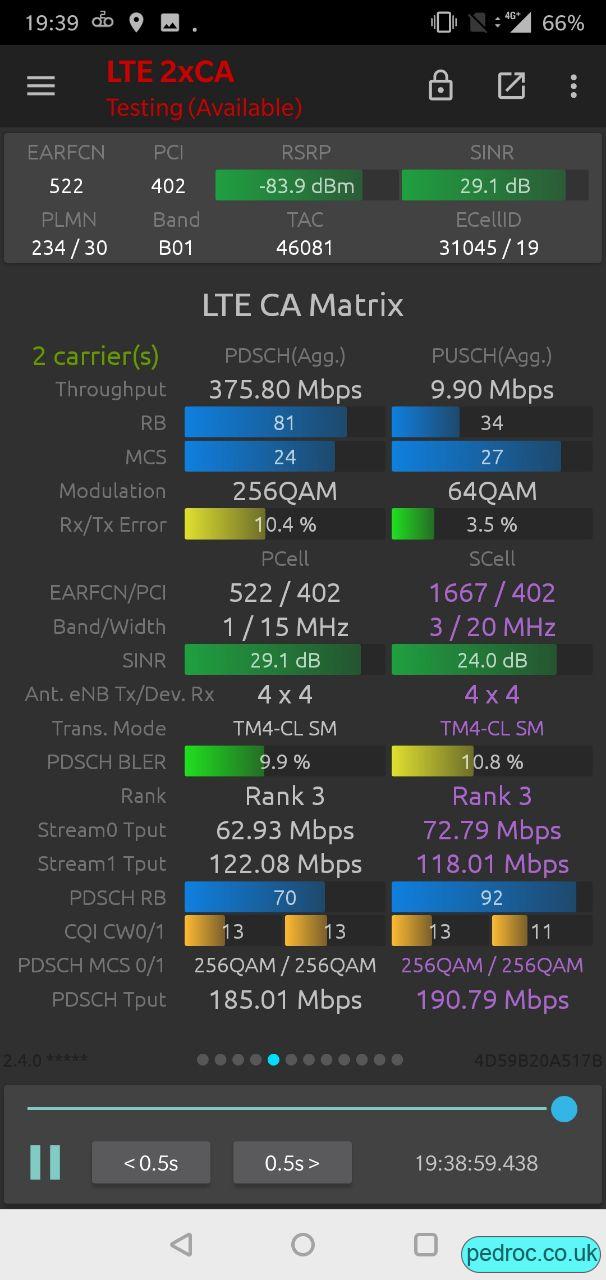EE 2100MHz Spectrum Overview
EE was formed from the merger of Orange and T-Mobile who each had 10MHz paired of 2100MHz (FDD), in total 20MHz paired. Over time, this was gradually refarmed to the extent, that with 3G switch off, some areas now broadcast 20MHz paired LTE +/- NR on the band.
Historical Context
T-Mobile previously operated DL UARFCNs 10761 and 10786 while 10811 and 10836 by Orange. The T-Mobile network was broadly favoured by EE during the consolidation process and therefore 10761 and 10786 remained as the base 3G carriers post-consolidation, while 10811 and 10836 were solely seen in high load urban areas only. However, with the increasing penetration of 4G devices and calling over 4G (VoLTE), load on 3G has decreased with 4G, and later 5G, load increasing, making reuse the most efficient use of spectral assets. The 'Orange' spectrum was refarmed first, converting 10811 and 10836 to the 10MHz LTE configuration, DL EARFCN 547. As of August 2018, the L21 was further seen widened to 15MHz DL EARFCN 522 on some sites, swallowing up DL UARFCN 10786 to refarm as well. As of 3G switch off, LTE and NR now occupy up to the full 20MHz paired in 2100MHz with 4G DL EARFCN being 497.
Introducing Multi Band RRUs
With refarm work, we saw wide scale deployment of dual band radios on EE for the first time, in the form of Huawei's then recently released dual band 5507 model RRUs capable of emitting 1800MHz and 2100MHz simultaneously from the same unit. The 5507s are 2T4R but can be paired up on each sector to do 4T4R on both bands. We have since seen multiband radios from Huawei, Ericsson and Nokia becoming common on EE.
A typical early 2100MHz 4G deployment mast layout

This early site configuration used a pair of antennas per sector: a Kathrein dual high band 8001050v01 or similar and a Huawei Quad band AQU4518R11v06 or similar. The former radiated 3's 4G 1800MHz, 3's 3G 2100MHz and likely EE's 3G 2100MHz. The Huawei antennas were fed by the dual band Huawei 5507 RRUs for 1800MHz and 2100MHz with Huawei 3262 for 2T4R 4G 2600MHz. Diplexors were used to manage the antenna port count required. This site was decomissioned for building work with a site on a nearby building built.
A lot of spectrum for the time

Cardiff was a city with extensive 4G spectrum on EE prior to the 2100MHz refarm with 800MHz 2x5MHz (6225), 1800MHz 2x30MHz (1667 20MHz, 1811 10MHz), 2600MHz 2x35MHz (3350 20MHz, 3179 15MHz), totalling 2x70MHz. With the 4G 2100MHz, this increases the 4G deployment to 2x80MHz, an astonishing amount! As of 2024, it is looking at 2x95MHz thanks to 40MHz paired modern use on 1800MHz and fully refarmed 2100MHz. EARFCNs nowadays in 2024 are rather different too: primary 1800MHz DL is 1617, secondary 1761 or 1815, 2100MHz 522/497 and/or various NR (see below).
The band 1 spectrum uses sector IDs: 18,19 and 20.
The widening to 15MHz

As of August 2018, the L21 has been widened to 15MHz on some sites in Hull, swallowing up 10786 to refarm as well. In London, 10786, 10811 and 10836 have suddenly vanished in large parts of multiple zones so I expect 15MHz l21 will be appearing there soon. Thanks to Matthew for being early to finding the 15MHz refarm. It since became extensive. With 5G deployment, 15MHz paired is seen in a number of configurations: 4G only, DSS or 5G NR only.
Widening to 20MHz
With 3G switch off, it naturally followed that 2100MHz use became entirely modern with 4G and/or 5G services. The DL EARFCN in 20MHz L21 is 497.